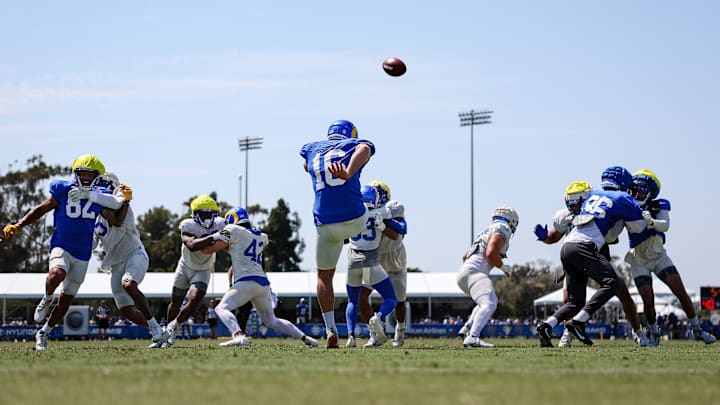
The NCAA way
Are Rams adopting NCAA reality to roster building? Before pooh-poohing the concept, hear me out. Successful college football programs are not capable of finding and retaining players for the long haul. It's the NCAA way for college football teams to plan their roster around a 3-4 year turnaround and then in the offseason ensure that they have recruited sufficient talent at key positional needs to ensure a competitive team the following season.
While that does eliminate one of the NFL's advantages of entering into long-term contractual relationships with players, there are several distinct advantage to an NFL team that adopts a four-year cycle on the roster. I will elaborate on this process in a deeper dive in the near future, but for the time being, let's examine what this brings to the LA Rams in terms of strategic advantages:
I: Scouting and personnel department fluency:
Let's take a look at the overwhelming workload that the LA Rams have willingly committed to undertake for the 2023 NFL season in terms of their scouting and personnel department. Unless the Rams organization finds a lottery's worth of available and spendable salary cap space, the team is almost certainly limited to shopping undrafted rookie free agents to fill as many as 30 positions on this roster after the draft. That's in addition to the 11 (or more) picks that the team will use during the draft. While some teams focus on the final 20 or fewer players, the Rams front office must compile more than twice that. If practice makes perfect, the Rams personnel office will become very adept very quickly.
II: Less expensive roster to maintain
The NFL and NFLPA agreed years ago to cap the salary levels of incoming rookies. Because the incoming rookies held lots of bargaining power, and consume far too much of a team's payroll in the process, NFLPA members agreed to cap the salaries of rookies in return for forcing teams to spend more on veterans. The result has had the effect of making any rookie no selected among the Top-50 in an NFL Draft into some of the least expensive players to pay for on a roster.
To understand why that matters to the LA Rams strategy, let's focus on what the LA Rams do: The Rams target elite veteran game-changers, and then pay them at that elite level. That is why Cooper Kupp and Aaron Donald have no lack of currency. To balance that top-heavy compensation, the Rams have adopted methods of adding plenty of less expensive rookie contracts to their roster. That is why the Rams seldom re-sign veterans to a second contract. The money that would be used to pay returning veterans has already been earmarked for the top players on the team.
III: Quicker turnaround from struggle to success
Perhaps the most important advantage, and the reason why I believe that the LA Rams are wholly embracing this change of strategy is the simply fact that, college football teams, it facilitates a much quicker turnaround in the fortunes of the team. It only makes sense that a team that for all intents and purposes replaces almost every player on the roster within a four-year window will have dramatically different results with a new iteration of the roster.
Right now, the LA Rams are eager to flip this team from a 5-12 season to a team that is in the discussion for an NFL Playoff spot. To fast track that process, the Rams have the means to do so by filling up the roster with as many rookies as possible. While that could pose a challenge in 2023, the team will be highly competitive in 2024-26 because the majority of the Rams roster will be competing on their rookie contracts. And the Rams will continue to assess and prune underperforming players, so that the roster is optimized for competitiveness and affordability.
